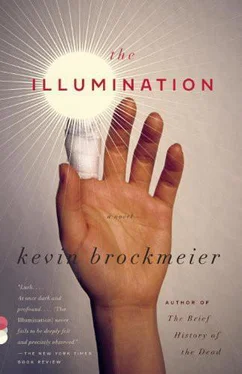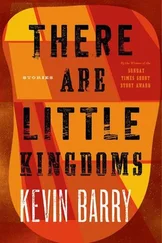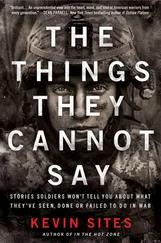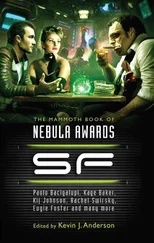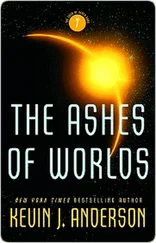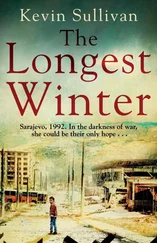For his rookie post he had been sent to Seattle, the kind of safe, prosperous city, with a healthy network of ministries and outreach programs, to which the church assigned people who needed to be eased into the work. From there he moved on to Chicago, and then to New Swanzy, Michigan. After that, every six months or so, he would find himself being transferred yet again, sometimes to the most blighted area of a large city—East St. Louis, North Philadelphia, Hunters Point in San Francisco—sometimes to a fading farm town in the Plains or the Mississippi Delta, some small cluster of fields and houses strung together by a single-pump gas station and a couple of local businesses, one a grocery store with a sign that read STORE, the other a restaurant with a sign that read RESTAURANT.
The pastor would call him aside and say, “Shifrin, you know where we could use a man of your skills?”
“Where’s that?”
Seeley Lake, Montana. Or the Vine City neighborhood of Atlanta. Or Barlow, Mississippi.
And off Ryan would go, packing his bags and leaving his forwarding address with the secretary at Fellowship Bible. He knew evangelists who liked to talk about their feeling of backward homesickness, that overpowering sense of estrangement that alienated them from their friends and families and drove them into the world to spread the Gospel. Maybe, Ryan thought, he had developed his own variation of the disorder. No, he was not troubled by homesickness, of either the backward or the forward sort. He had grown used to the itinerant life, though, and no longer missed his old rootedness. What was home to him? What did it have to offer? If he had a home at all anymore, it was not a where but a when. Home was thirty-five years ago, when his parents and his sister were alive, and his bedroom walls were plastered with football posters, and his days were marked by triumph or defeat according to whether or not Becca Yeager had spoken to him at school.
He sensed that the church was grooming him for something. Seven years had passed since Pastor Bradley coaxed him into volunteering. Seven years of reflection, seven years of wandering. Seven years of trying to look through the sickness he could see in people’s bodies to the sickness the Bible said lay in their souls. Every few months he was posted to a new city where his colleagues would ask him to try his hand at a different brand of missionary work. The radio ministry, the literature ministry, the church-planting ministry. It was obvious to everyone where his talents lay—he was suited to literature, not to church-planting, and certainly not to radio. No matter how chancy the neighborhood, he could walk its streets with a stack of pamphlets and spend the day safely emptying them from his hands. He could explain the messages they contained in words that were, if not convincing, then at least clear and precisely shaded. And when they had fallen out-of-date, he could rewrite them, a task he found intimidating until he realized that preparing a religious pamphlet was simply a form of collage—splice a few Bible verses together with a story or two of sin and salvation and voilà: a lesson in scripture. His true gift, it turned out, was for titles. One night he happened to hear a discussion on public radio about great works of literature and their failed early titles, and though he was listening with only half an ear, he caught the speaker saying how poorly Gone With the Wind would have been received if Margaret Mitchell had allowed it to remain Tote the Weary Load , or A Farewell to Arms if Hemingway had persisted in calling it They Who Get Shot . He examined the pamphlets that were cataloged on the church computer. The first one to meet his eye was “The Power of Prayer.” Not bad, he thought, but what if it were “God’s Line Is Always Open”? Next came “You Can Be Free from the Bondage to Offenses,” which was—let’s face it—awful. He changed it to “Which Cheek? The Other Cheek.” And then there was “Salvation: The 5 Most Asked Questions,” which, after some thought, he recast as “Go to Hell! (and How Not To).” He had done enough tampering for one night, he decided. He printed fifty copies of each pamphlet and added them the next morning to the church’s literature stand.
That Wednesday, after the evening service, he discovered that the pamphlets were all gone, every last one of them. This was in Miami, at a busy Cuban church housed in the back of a thrift shop. It seemed possible that someone had simply stolen them for scrap paper. But the next day a team of missionaries took a boxful to distribute in the Art Deco district and returned to Ryan’s room in less than an hour. They had already given out the entire assortment, they reported, and afterward, walking home, had found fewer than half of them in the trash cans lining Ocean Drive. “What we’ve got here is the milk chocolate—no, the crack cocaine—of religious tracts,” someone said to Ryan. “I’m telling you, man, you should have gone into advertising.”
For the next three weeks, until another call came and he was appointed to Boxholm, Iowa, everyone called him the Ad Man.
He had traveled the entire country during his seven years of service. He had visited tiny clapboard houses exiled at the ends of wooded roads. He had picked his way through hivelike clusters of bars and apartment buildings. He had driven through the countless nameless suburbs that went snowflaking out from big Midwestern cities, giant recurring patterns of green grass and smooth black asphalt. He must have been witness to tens of thousands of people, and over time he had formed an interest in the varieties of injury they displayed. He could have put together a book sorting their traumas into two separate lists on the basis of where they lived, one for the city and one for the country. A Comparative Taxonomy of Wounds . On any city street you could spot the pulse flares of impacted heels, in any city hospital the elongated V ’s of stab wounds, while at any country fair, any minor-league baseball game, you would find skin cancer pocks like small clusters of stars, sprained knees like forks of lightning, dislocated shoulders like the torchlit rooms of ancient houses. People in the city exhibited the sickly luster of pollution rashes and the silver sparks of carpal tunnel syndrome, while in the country they wore the shimmering waves of home tattoo infections, the glowing white zippers of ligature abrasions. In the city you had your lungs and your stomach to distress you, in the country your skin and your liver, and everywhere, everywhere, there were the agonies of your head and your heart.
And yet somehow Ryan had escaped with barely a scratch.
He was convinced he had seen every disease imaginable, but one day he was in Brinkley, Arkansas, buying a bottle of water from a convenience store, when the girl at the cash register closed her eyes, planting her palms on the counter, and the entire armature of her skeleton showed blazing through her skin. Her lips shaped the numbers one, two, three , to the count of seventeen, until the pain had run its course and the light diminished.
She let the air out of her lungs and finished scanning his water bottle. Her eyes had the clarity of ice thawing in a silver tray. Nonchalantly she said, “That’ll be a dollar seventeen.”
Ryan was shaken. “Are you all right? Give me just a second—” The girl’s full name was printed on her badge: Felenthia Lipkins. “Give me just a second, Felenthia, and I’ll call the hospital.”
“It’s Fuh- lin -thia. Like Cynthia.”
“Fuh-lin-thia. Would you like me to call a doctor?”
“ You said Felon- thia. Black girl working at the Superstop so I’ve gotta be a felon . Is that it?”
Читать дальше
